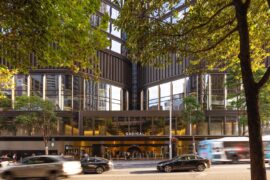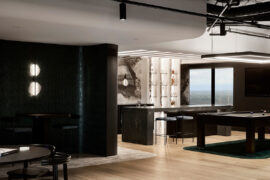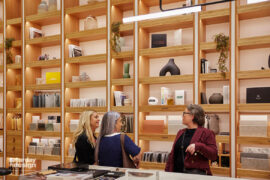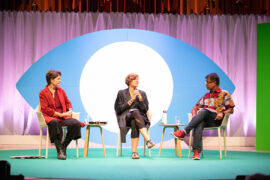Industry experts discuss the future of collaborative work environments and the importance of putting workplace culture first at Design Conversations 2016, held as part of Singapore Indesign.

October 18th, 2016
Workspaces, much like the ways in which people interact, have undergone tremendous transformation in the last few decades. With growing technological advances, globalisation of organisations and the need to stay innovative and competitive, many workplaces have shed their cubicle minded approaches in favour of open plans and technology-loaded spaces designed to spur teamwork and collaboration.
But is there a one-size-fits-all solution for productively collaborative workspaces? Or does the once coveted open plan design approach deserve a second look, as employees become more discerning of their work surroundings?
This was a hot topic of debate at this year’s Design Conversations panel discussion on WorkLife: The Collaborative Future of the Workplace, held as part of Singapore Indesign 2016 at the Schiavello Singapore showroom on Saturday 8 October. The panel of speakers included Philip Hannaford, Director, Realys; Nick McMicking, Chief Representative Asia Pacific, BENE GmbH; Rhian Windridge, Director Project Management APAC, CBRE @ Google Account; and moderator Neil Salton, Managing Director, ChangeWorq.
The conversation centred on pushing the boundaries beyond the expected trends in office space design and helping clients to understand that not all workplaces collaborate and co-create in the same way.
Moderator Neil Salton set the tone of discussion by emphasising that the parameters of what constitutes a successful workplace are continuing to change. “Successful collaboration demands much more than a provision of interactive technology and meeting spaces,” said Salton. “It is no longer just about how things look, but how well things work and that is where the value of great design really starts to come together.”
Salton’s mindful stance on technology integration within a workspace was unanimously shared by other panelists. With a discussion that an integration of technology may not always result in a collaborative environment, the conversation centred on other factors to make a workplace effortlessly and fruitfully collaborative.
“I have a concern that by putting technology in every boardroom and thinking that we are facilitating and solving for collaboration, we are actually creating problems,” said Rhian Windridge. “The real spaces for collaboration are not boardrooms but food places, gyms and other social situations where people come together and build relationships.”
The idea that collaboration could take place outside of the confines of the offices, or even buildings, brought about the notion of rethinking what meeting spaces could be. “Where I go to work doesn’t matter, what I do actually matters,” expressed Salton. In other words, by remaining flexible and broadening the definitions of working and meeting spaces, the parameters of creative solutions for workplaces of tomorrow could also be broadened.
In regards to knowing how to identify appropriate workplace solutions for eager companies seeking change, culture was one aspect that the speakers repeatedly returned to as a driving factor behind implementing new design and workplace strategies successfully.
“When designing with our clients, we need to understand their company values in order to identify a range and variety of collaborative spaces for the employees that enhance those values and ways of working,” said Philip Hannaford.
In final response to the opening statement – is there a one-stop solution for an effective collaborative work environment in today’s fast paced world – the panel’s answers called for a more thoughtful re-examination of a variety of completing factors that make up the modern workplace today. In Salton’s concluding words, “It always has been and always will be about the people; for them to do what they need and for them to find those places where those things can be done is key to a collaborative environment.”
Project images courtesy of Realys. Design Conversations images by Angie Ng
INDESIGN is on instagram
Follow @indesignlive
A searchable and comprehensive guide for specifying leading products and their suppliers
Keep up to date with the latest and greatest from our industry BFF's!

Rising above the new Sydney Metro Gadigal Station on Pitt Street, Investa’s Parkline Place is redefining the office property aesthetic.

The shared Melbourne office brings together Studio 103 and McCormack in a dual headquarter that doubles as a showcase of materials and craft.

Saturday Indesign lit up the CBD and South Melbourne with design, wellness, hospitality, and community in a day full of creativity and connection.
The internet never sleeps! Here's the stuff you might have missed

At the World Design Congress in London, a simple idea threaded through two dense days: design is not an island. It moves inside wider systems of economics, policy, finance and ecology.

Guests joined Cosentino for a behind-the-scenes look at The Block homes, discovering new materials and creative partnerships.